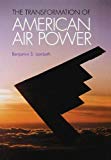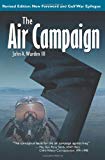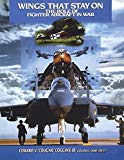The F-16 Fighting Falcon
In the early 1970′s, the Air Force was in need of an inexpensive fighter aircraft to supplement its new and expensive air superiority fighter, the F-15 Eagle. Two aircraft were created for this mission. The YF-16 Falcon came from General Dynamics, and the YF-17 Cobra from Northrop. The YF-16 rolled out of its Fort Worth hanger on December 13, 1973 and was put on a C-5 to be transported to Edwards AFB, California for testing. The first flight happened on January 21, 1974 by accident. Test pilot Phil Oestricher was attempting the first high-speed taxi when the nose started to lift off of the runway. The YF-16, which was the first aircraft to use a fixed stick because of its fly-by-wire flight controls, started to veer off to the left. Instead of plowing into the desert, he decided to take off, he flew the pattern for six minutes and landed uneventfully. It didn t take the program long to come up to speed, soon the YF-16 reached speeds over Mach 2.0 and pulling aver 9G s. Part of the reason this aircraft could pull so many G’s was because of the seat; it was inclined 30 degrees to reduce the effects of G-force upon pilots. An interesting fact is that the YF-16 and YF-17 never faced each other, but flew against MIG-17s and MIG-21s that the USAF had acquired . The YF-16 won the competition, and what is probably the most versatile aircraft in the world was born. As a side note, the YF-17 program was later targeted towards the Navy and became the F/A-18 Hornet .
One of the first experiments with the F-16 was the Control Configuration Vehicle (CCV). The aircraft used for this program was the first YF-16 (72-1567); it was rebuilt in December 1975. This aircraft has independent of uncoupled flight control surfaces, which make it possible to move in one plane without moving in another-such as turning without having to bank. The last flight of the YF-16/CCV was on June 31, 1977; it had flown 87 sorties for 125 hours.
The experience gained in the YF-16/CCV program was later utilized in the F-16/AFTI program. The F-16/AFTI (Advanced Fighter Technology Integration) program was awarded to General Dynamics on December 26, 1978, and an F-16A (75-0750) was modified for this purpose. The F-16/AFTI program is a joint NASA/USAF effort to evaluate advanced digital flight controls, automated maneuvering, voice-activated controls, sensors, and close-air support attack systems. Most of the program focused on avionics, but it has provided a lot of information in aerodynamics, flight controls, and aircraft structures. A couple of the most noticeable features of the F-16/AFTI is its canards mounted just below the engine inlet, and the Forward Looking Infrared (FLIR) mounted near the wing roots and in front of the canopy. The canards allow for selective fuselage pointing to quickly acquire and target an opponent. The FLIR pods were used to study the aerodynamic and operational effects versus the traditional mounting of FLIR pods on the intake. Part of the structure testing involved the use of strain-gage instruments mounted on the interior of flight control surfaces. The latest use for the F-16/AFTI that I could find is its use in the development of the Joint Strike Fighter (JSF). The Lockheed Martin JSF team replaced the traditional hydraulically controlled flight control actuators with power-on-demand electric actuators, combined with a new 270-volt switched reluctance power system on the F-16/AFTI. This system saves both weight and cost compared to the heavy and labor intensive hydraulic system. This system increases an aircrafts survivability with the use of redundant wiring, and with the JSF being a single engine aircraft, there is always power for flight control surfaces in the event of an engine failure.
One of the more interesting F-16 test programs in my mind is the F-16XL. It was originally designed to explore wing platform and camber shapes to provide efficient supersonic cruise while providing fighter-like agility. The cranked-arrow design of the F-16XL was intended to offer low drag at high subsonic and supersonic speeds without compromising low-speed maneuverability. Two aircraft were to be modified for these experiments, they were 75-0747 and 75-0749. They had their fuselage lengthened 56 inches to accommodate the new wings, which at a surface area of 633 square feet were more than twice the size of the standard F-16. Because of this lengthening of the fuselage, the tail section needed to be canted 3 degrees to prevent the exhaust from coming in contact with the runway on takeoff and landing. Both of the F-16XLs are also missing their ventral fins for the same reason, but really they do not need them since the stability characteristics of the F-16XL are generally superior to standard F-16s. To cranked-arrow wing benefits in strength and weight from the use of carbon composite materials. The lengthening of the fuselage and larger wings led to an 82% increase in internal fuel load and an impressive 27 stores stations. The final result was an F-16 that had a 25% improvement in lift-to-drag supersonically and 11% subsonic, while offering a smoother ride at hide speeds and low altitudes. An interesting fact is that because of the F-16XLs increased fuel capacity and stores stations, it could carry twice the load 40% further than a conventional F-16. The Air Force announced its need for an advanced tactical fighter in March 1981. General Dynamics entered the F-16XL, while McDonnell Douglas entered a modified F-15B. In February 1984, the Air Force announced they had accepted the McDonnell Douglas aircraft, which later became the F-15E Strike Eagle. Had the F-16XL won the competition, it would have been designated F-16E(single seat) and F-16F(two seat). After losing the flyoff, the F-16XL began a new life with NASA to evaluate aerodynamic concepts to improve wing airflow during sustained supersonic flights. Both F-16XLs have been used for laminar flow tests, while F-16XL #1 was used to test the characteristics of sonic booms as part of the agency’s high-speed civil transportation program. F-16XL #2 had a new GE F110-229 put in it and accidentally achieved supercruise(supersonic flight without afterburner) early in its new program. It has had different gloves over the wings to test aerodynamic fluid dynamics along the leading edge of a supersonic surface, noise environment, and pressure distribution.
An F-16 test program that never was is the F-16/SFW. In 1976, the Defense Advanced Research Projects Agency (DARPA) awarded funds to General Dynamics, Rockwell, and Grumman for the Forward-Swept Wing program. Forward swept wings provide low drag and improved low-speed handling, but are difficult to manufacture. General Dynamics final proposal used the landing gear and most of the fuselage components from the production F-16, but the fuselage was slightly lengthened and strengthened for the forward swept wing. In January 1981, DARPA announced it accepted the Grumman 712 (an F-5/F-20 derivative), it later was designated the X-29A. One of the reasons given for not picking the F-16/SFW was that One could only learn so much from a single airframe. . With all of the ongoing tests being conducted with the F-16, that reasoning is proven to be flawed. An interesting note is that the about 16% X-29A consists of F-16 components, including the fly-by-wire flight control system.
Another unique test aircraft is the F-16MATV, which stands for Multi Axis Thrust Vectoring. This F-16 has been so heavily modified that it is now designated the NF-16D because it would not be worth it to convert it back to a standard F-16. This aircraft has two control sticks, one on the right like all F-16s and one in the middle like conventional aircraft. Using a combination of thrust-vectoring and computer programming the NF-16D can simulate almost any aircraft.
This is not all of the different projects that the F-16 have been used for. There have been a lot of different programs that have become operational like the F-16ADF (Air Defense Fighter), which my unit still flies. With these examples it is easy to see that the F-16 is one of the most heavily modified aircraft in the world.



